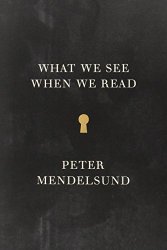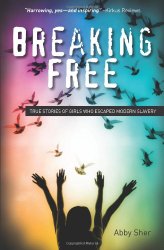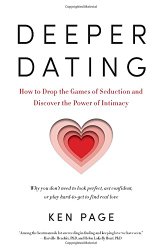Review of What We See When We Read, by Peter Mendelsund
A Phenomenology
With Illustrations
by Peter Mendelsund
Vintage Books (Random House), New York, 2014. 419 pages.
Starred Review
This book is hard to describe. It’s a book for adults which relies heavily on illustrations.
The author is an art director and a designer. He uses images and text to explore the question: What do we see when we read? What do our brains experience? Do we catch all the details? What’s going on in our brains and in our senses when we read?
There are thought-provoking images on almost every page.
Here’s an example of the interesting things he says, from one of the early chapters:
The story of reading is a remembered story. When we read, we are immersed. And the more we are immersed, the less we are able, in the moment, to bring our analytic minds to bear upon the experience in which we are absorbed. Thus, when we discuss the feeling of reading we are really talking about the memory of having read.
He talks quite a bit about Anna Karenina:
If I said to you, “Describe Anna Karenina,” perhaps you’d mention her beauty. If you were reading closely you’d mention her “thick lashes,” her weight, or maybe even her little downy mustache (yes — it’s there). Matthew Arnold remarks upon “Anna’s shoulders, and masses of hair, and half-shut eyes. . . ”
But what does Anna Karenina look like? You may feel intimately acquainted with a character (people like to say, of a brilliantly described character, “it’s like I know her”), but this doesn’t mean you are actually picturing a person. Nothing so fixed — nothing so choate.
There are many different fascinating trains of thought in this book, which really should be experienced. One in particular was when he talked about how memory and imagination are intertwined.
Memory is made of the imaginary; the imaginary is made of memory.
As an example of this, he remembers a trip he took with his family to a river and a dock when he was a child. And now that experience plays into his imagination any time he reads about river docks.
This is a book that should be experienced.
Writers reduce when they write, and readers reduce when they read. The brain itself is built to reduce, replace, emblemize . . . Verisimilitude is not only a false idol, but also an unattainable goal. So we reduce. And it is not without reverence that we reduce. This is how we apprehend our world. This is what humans do.
Picturing stories is making reductions. Through reduction, we create meaning.
These reductions are the world as we see it — they are what we see when we read, and they are what we see when we read the world.
petermendelsund.com
vintagebooks.com
Find this review on Sonderbooks at: www.sonderbooks.com/Nonfiction/what_we_see_when_we_read.html
Disclosure: I am an Amazon Affiliate, and will earn a small percentage if you order a book on Amazon after clicking through from my site.
Source: This review is based on a library book from Fairfax County Public Library.
Disclaimer: I am a professional librarian, but I maintain my website and blogs on my own time. The views expressed are solely my own, and in no way represent the official views of my employer or of any committee or group of which I am part.
What did you think of this book?









